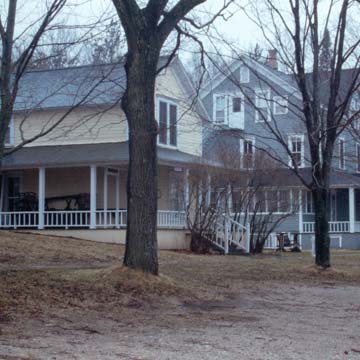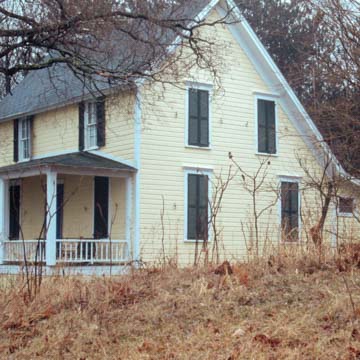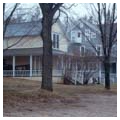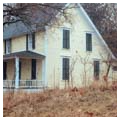Lying in the Herring Lakes Watershed, Watervale occupies a 12.5-acre linear parcel of land on the slightly curving south shore of Lower Herring Lake that flows through an outlet into Lake Michigan to the north. The geology, topography, climate, soil, and vegetation of the Watervale area produced a physical environment favorable to a lumbering industry and, subsequently, idyllic to a summer resort.
Watervale is a rare example in Michigan of a former lumber-industry town that has retained most of its buildings in nearly original condition. Pine was cut from the forest in the watershed as early as the mid-nineteenth century, but lumbering really began at Watervale in the 1880s. Watervale was developed as a lumber-industry town in 1890 by Leo F. Hale and his Watervale Manufacturing Company and operated until the company went bankrupt in 1894. The wooden houses, general store, boardinghouse, offices of the lumbering village from 1890 to 1894, and post office from the lumber era stand along the south shore of Lower Herring Lake on lots delineated in the 1893 Plat of Watervale.
In 1917 after the lumber boom, Chicago ophthalmologist Oscar H. Kraft (1872–1962) acquired Watervale and began the long task of developing it as a recreation site and resort community. Kraft and succeeding generations of the Kraft family adapted the lumber village buildings as summer cottages, an inn, and casino. Most of the buildings of Watervale run in a string along the flat area adjacent to and southeast of the mill site and south of the path of Lake Avenue that once extended along the south shore of Lower Herring Lake. Lake Avenue follows the path of the logging railroad.
The Kraft family's stewardship of Watervale continues to the present. The Inn at Watervale has donated to the Grand Traverse Regional Land Conservancy conservation easements to shoreline and forest and to the State of Michigan a preservation and conservation easement for the historic buildings of Watervale.











